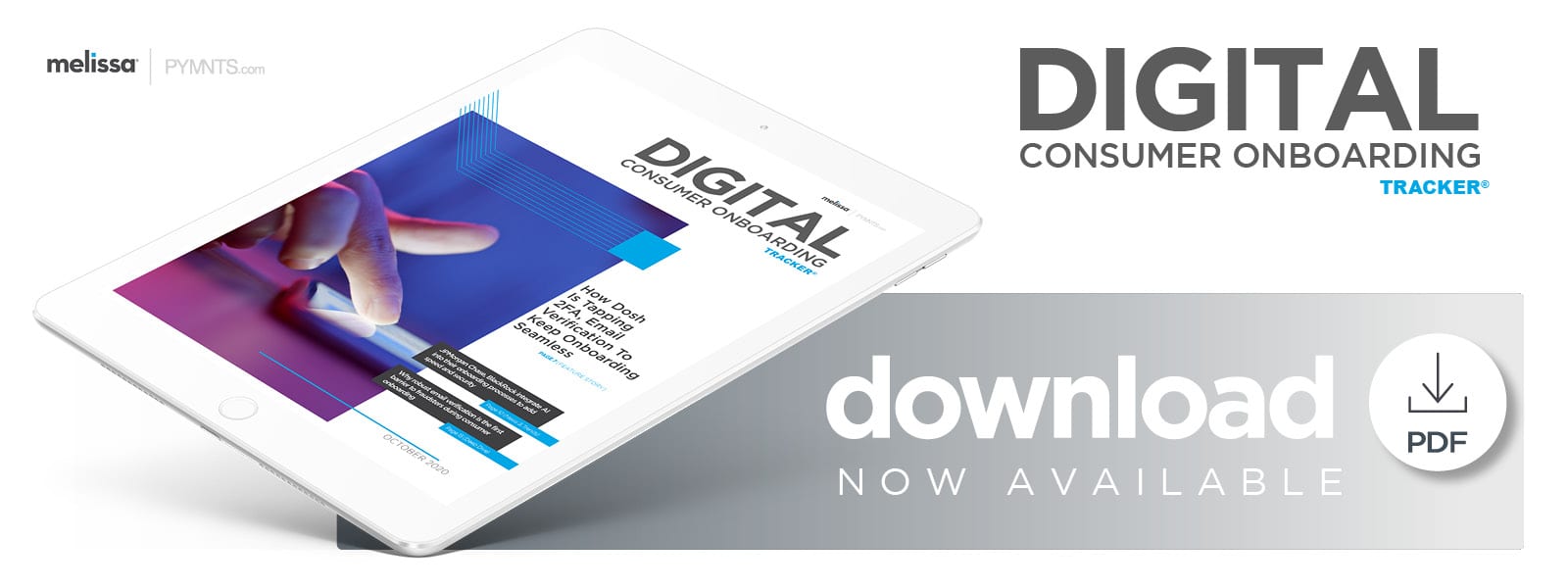Deep Dive: Why Robust Email Verification Is The First Fraud Barrier For Consumer Onboarding

Fraudsters are possibly the only ones relishing the changes wrought by the ongoing pandemic.
The reverberating economic uncertainty and drastic shifts the pandemic has brought upon most industries have handed cybercriminals unique and multiplying opportunities to enact new and improved schemes. One study on six countries, including Canada, the U.K. and the U.S, found that 32 percent of consumers have been targeted by some type of pandemic-related fraud, for example.
These schemes range from tailored attacks against U.S. state employment programs to phishing scams with bad actors claiming to represent retailers — such as luxury brand Vince Camuto in one recent email scam — to good old-fashioned identity theft. Digital-first banks, insurance firms and merchants are tasked with protecting against the schemes to keep their customers’ data secure.
There is one particular piece of personal information that is widely used across these and other fraud schemes that needs to be robustly protected to keep fraudsters out, however: the seemingly innocuous — but often ubiquitous — email address. Fraudsters regularly rely on stolen email addresses to pose as legitimate customers to break into online platforms, and compromised email addresses can help lead cybercriminals to other, more sensitive information such as bank account, healthcare or insurance details.
Properly verifying the email addresses attached to clients is therefore essential for companies in the present market — and to keep out fraudsters successfully, this must be done at the very start of new customer relationships.
The following Deep Dive examines why email verification at the point of onboarding is crucial for security and fraud prevention and why this is becoming more important as the pandemic has forced more banking and commerce interactions online. It also explores what tools or technologies banks, merchants or other entities could use to enhance their email verification and general onboarding process as the volume of fraud attempts continues to grow.
Email and the Verification Divide
Successful onboarding, regardless of industry or service, is the most delicate part of a new customer relationship. One wrong move can result in abandonment for more seamless pastures. This is especially true now that consumers expect digital onboarding platforms to approve their accounts and identities in a matter of minutes.
Email verification can therefore be tricky for many companies because it often requires an extra step in the onboarding process. Retailers may test email addresses assigned to new accounts by sending out confirmation codes or verification links that require consumers to confirm their identities and thus briefly take them out of the onboarding experience. Adding in that type of friction can have costly consequences, unfortunately. One report found that companies around the world collectively lose approximately $1.6 trillion due to consumers abandoning their platforms per year, for example.
Fraudsters can slip in during this moment as well. Two schemes that have become more popular in recent months include shipping fraud or bad actors changing account information by calling brands’ call centers, both scams that can occur if there is a gap in the onboarding process. One study found that 12 percent of consumers targeted by pandemic-related fraud were pinged by cybercriminals trying to change their details via call centers, for example.
Not employing email verification at all can be just as costly if not more for banks or retailers looking to onboard consumers via digital channels, however. Fraudsters have already stolen a massive pool of email addresses and other personal details they can use to pose as legitimate customers. One 2019 report found that there are approximately 2.2 billion stolen email addresses and passwords for bad actors to play with on the dark web. Email verification is thus a necessity, but it must meet consumers in the channels they already use and at the speed they expect. Doing this effectively may require companies to consider where their customers currently interact with their brands and what authentication tools may suit those channels.
The Future of Email Verification
Companies are racing to master digital onboarding and online consumer relationships during the ongoing pandemic, but they still may be outdated in their thinking about onboarding strategies. One important factor that entities must consider when crafting secure onboarding experiences is the role of the mobile device — particularly how such devices’ inherent hardware and software may be able to add in new security. Mobile commerce was thriving even before the pandemic, with 78 percent of eCommerce traffic conducted through smartphones in 2019, according to one report. That means consumers — especially when brick-and-mortar commerce is still depressed — are expecting to start relationships with new companies not only digitally, but through mobile devices.
Creating mobile-optimized email verification strategies as part of the onboarding process may be one way that companies can give users the speed and seamlessness they are expecting from digital sign-ups, for example. Using the mobile phone itself as another point of authentication can help strengthen security in this process, with companies able to scan the smartphones’ hardware or send SMS text messages as well as email verification codes that can prevent fraudsters from accessing their platforms.
It is unclear how the pandemic will continue to change onboarding or customer relationships, but there is no doubt that fraudsters will be present to take advantage of any growing pains. Secure yet seamless email verification is the first step to ensuring they do not get the opportunity.

